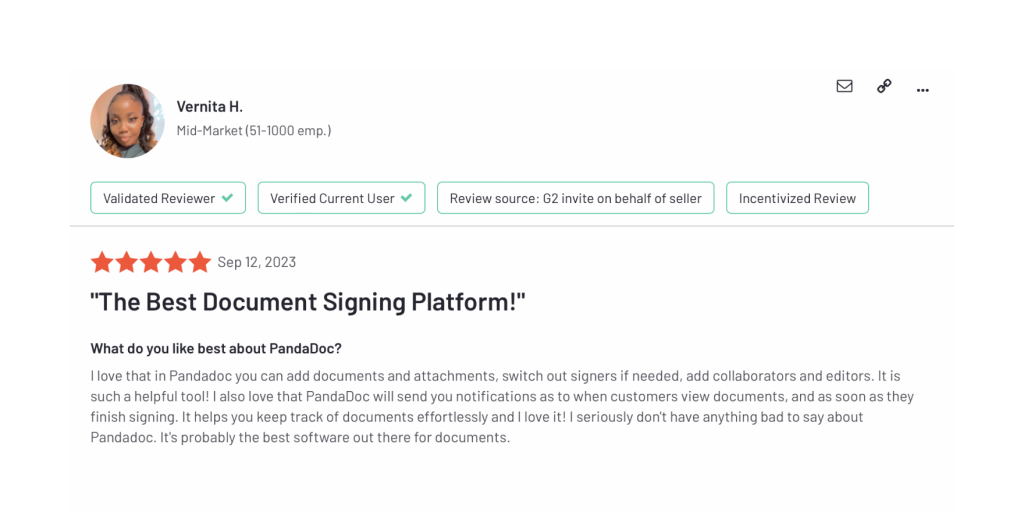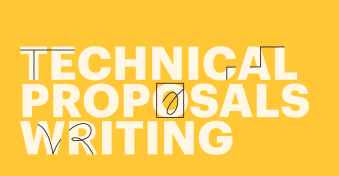Convincing clients to work with you by presenting your best business proposal is often a challenge for sales representatives.
Your potential clients have likely received several pitches from your competitors and may not have much time to spare between meetings or phone calls.
Salespeople must present their business plan most effectively to increase their chances of success and walk away with a sale.
This article will show you step-by-step how to have a dynamic and engaging presentation to win your proposed deals and convert those potential leads into satisfied clients. Let’s get to it!
Address your customer’s issues
First and foremost, for your business proposal presentation to be successful, it must address your client’s problems.
Don’t start your pitch by talking about your company and the price of your product or service; instead, focus on the customer’s pain points.
Because, in the end, what your B2B customers want is to win new customers themselves, increase their margin and beat their competition.
By all means, don’t hesitate to research your potential client’s business by looking at their website, their social media and customer reviews, etc., to best understand their needs.
Doing your homework is never underrated!
Choose a template that stands out
While the majority of salespeople still make their business presentations using PowerPoint templates, this is far from the ideal method.
PowerPoint presentations have two main drawbacks: lack of customization and long creation time.
To be more efficient and increase your chances of a winning business proposal, use PandaDoc’s free business proposal templates.
In addition to offering pre-built and fully customizable templates, PandaDoc also provides other templates for any kind of business document.
Make your proposal interactive
You can add interactive elements to make your business proposal more dynamic and interesting.
Simply scrolling through the images of slides is something basic and potentially boring for your prospects — remember, if everyone does it, that makes it average by default, and your intention is to stand out here.
One clear cut example: You can distinguish yourself from classic presentations by adding animations when a graphic or text appears or when you click on a tab.
This technique, which seems very simple, is extremely effective in retaining the attention and commitment of customers.
Include visuals in your presentation
If you want to engage potential clients, an effective business proposal must contain captivating visuals that scream equal parts “problem identified” and “here’s a solution.”
It is, therefore, essential to include certain graphics in your presentation to illustrate the key points of your offer.
This will capture your audience’s attention more effectively and increase the chances of closing the deal.
This doesn’t mean you have to use images all the time.
As mentioned above, include easy-to-understand images that can define a point without ambiguity — graphs and charts may be supportive, but not if they are too difficult for your prospects to easily grasp.
Make it brief and concise
Keep in mind that your potential client does not know your product or service and will not necessarily have much time to spend with you.
Brevity is an ally here, and it’s essential to focus on the main points of your offer during the initial sales process.
For example, drilling down on how the proposed solution will precisely solve your customer’s problem is a solid starting block. (Because you’ve done your research!)
Don’t try to add too much technical information up front, as this will lose the client’s interest and make it more difficult for them to decide to do business with you.
Of course, be expertly prepared for any questions before they get asked. (Again: research.)
Once they become interested, you’ll have plenty of time to cover everything in greater detail; at the onset, however, only communicate what truly matters to your client.
Provide social proof

Another way to help convince prospective clients that doing business with you is the right choice is to include social proof in your presentation.
Show your client examples of companies you have worked with and achieved stellar results — the more well-known, the better.
And be sure to include testimonials from satisfied businesses and entrepreneurs who have used your products and services.
Displaying the successful history of your business shows that your customers trust you. And this will only elevate your chances of attracting new clients.
Include case studies in your business proposal presentation
In addition to social proof, you can also incorporate case studies into your business proposal.
It allows your customers to have a concrete, “IRL” example of the application of your product or service and its benefits.
Present a case study (or studies) similar to your client’s situation.
As a result, the client can visualize themselves using your product or service, estimate the value your proposal can bring to their company, and be more inclined to sign the contract.
Doing so will increase your customer’s confidence in you, and they will know that you take your work seriously.
Set a clear follow-up at the end of the meeting
This last point is probably one of the most important to close the deal.
It’s about explaining what will happen after the presentation and clarifying the steps involved in implementing the project to avoid any confusion.
The best way is to indicate a follow-up date and set a timeline.
Let your prospective client know when they can expect the proposal and, once received, call them back a few days later to see if they have any questions.
This establishes a clear foundation of the project timeframe, which will improve your business relationship and only enhance client satisfaction.
Use PandaDoc for all your business proposals
No matter the size of your company, PandaDoc is ready with complete support when it comes to the management of your business documents.
Whether it’s a request for proposal (RFP), business proposal, quote, or business plan, PandaDoc offers many pre-built templates to help your company win over more customers.
You’ll be able to easily fill out and transmit your business documents, in your brand’s image, and in far less time.
So don’t wait any longer and start your free PandaDoc trial now. We’re here for you!
Disclaimer
PandaDoc is not a law firm, or a substitute for an attorney or law firm. This page is not intended to and does not provide legal advice. Should you have legal questions on the validity of e-signatures or digital signatures and the enforceability thereof, please consult with an attorney or law firm. Use of PandaDocs services are governed by our Terms of Use and Privacy Policy.


